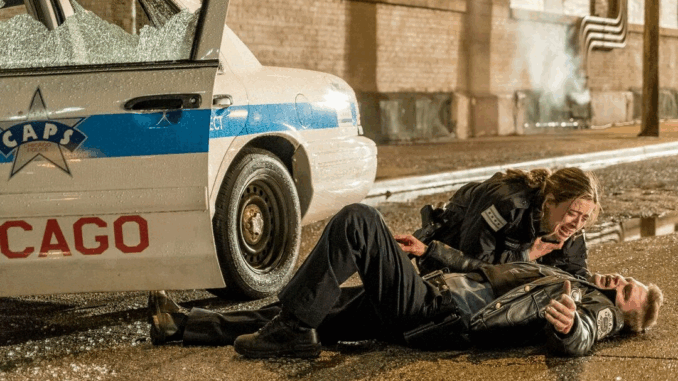
There have been many intense scenes in NBC’s Chicago P.D., but few have hit as hard — or felt as real — as the shocking Season 7 interrogation room breakdown involving Detective Jay Halstead. In an episode titled “Absolution”, fans witnessed Halstead go rogue in a way that sparked heated discussions online, but what many didn’t realize was that the entire plotline was eerily inspired by a real-life case.
The scene in question shows Halstead, played by Jesse Lee Soffer, confronting a kidnapping suspect connected to the murder of a woman he had vowed to protect. Unable to control his emotions, Halstead crosses the line during an unsanctioned interrogation, raising questions about morality, trauma, and justice. He slams the table, shouts, and nearly loses control — not as a cop, but as a human being devastated by failure.
Viewers were riveted, and the emotional weight felt unusually raw. That’s because it was.
According to writers on the show, the storyline was loosely based on the true story of a 2018 Chicago detective who lost a key witness in a gang-related case. After the witness was found dead, the real-life detective spiraled, ultimately resigning after it was revealed that he had conducted an off-the-record confrontation with one of the suspects. While the show didn’t recreate the real story beat-for-beat, it captured the emotional consequences — the guilt, rage, and helplessness — that come from watching justice slip away.
Jesse Lee Soffer himself said in interviews that this episode was one of the hardest to film. “It didn’t feel like acting,” he admitted. “We talked to real officers who’ve dealt with loss like this. The grief and anger are real — and it doesn’t always end with a clean arrest.”
Fans reacted with a mix of admiration and discomfort. Some praised the show’s boldness in portraying a cop losing control in a raw, vulnerable way. Others criticized the moment as glorifying brutality. But showrunner Rick Eid stood by the creative choice. “We didn’t write this to justify anything,” he said. “We wrote it to ask hard questions. What happens when the people we trust to protect us become victims themselves?”

The scene has since become one of the most rewatched clips from the franchise, with many noting how it marked a turning point in Halstead’s character arc. For the first time, viewers saw not just a detective — but a man whose personal code was crumbling under the weight of tragedy. That duality made the character more human… and more flawed.
Even more surprisingly, the episode inspired a wave of fan letters from actual law enforcement officers. One retired Chicago cop wrote, “That episode showed what it really feels like to carry a badge and a broken heart.”
In the larger world of One Chicago, this wasn’t just a dramatic TV moment. It was a reminder that fiction often reflects real pain, and that behind every badge — whether scripted or real — is a person struggling to do the right thing in a world that doesn’t always allow it.
In a franchise known for its heart-pounding action and sweeping ensemble drama, this quiet, brutal scene became something more: a mirror. One that didn’t shy away from the truth.
And that’s exactly why it hit so hard.
